-
 Bitcoin
Bitcoin $117600
-0.94% -
 Ethereum
Ethereum $3567
4.03% -
 XRP
XRP $3.422
5.29% -
 Tether USDt
Tether USDt $1.001
0.05% -
 BNB
BNB $741.2
2.18% -
 Solana
Solana $177.2
1.33% -
 USDC
USDC $0.9998
-0.01% -
 Dogecoin
Dogecoin $0.2432
13.70% -
 TRON
TRON $0.3277
3.88% -
 Cardano
Cardano $0.8322
3.44% -
 Hyperliquid
Hyperliquid $44.93
-3.85% -
 Stellar
Stellar $0.4712
0.77% -
 Sui
Sui $3.866
-3.70% -
 Chainlink
Chainlink $18.07
5.32% -
 Hedera
Hedera $0.2688
9.36% -
 Bitcoin Cash
Bitcoin Cash $515.8
3.87% -
 Avalanche
Avalanche $23.95
4.68% -
 Shiba Inu
Shiba Inu $0.00001493
3.69% -
 UNUS SED LEO
UNUS SED LEO $8.921
0.92% -
 Toncoin
Toncoin $3.235
0.73% -
 Litecoin
Litecoin $104.5
3.15% -
 Polkadot
Polkadot $4.335
2.58% -
 Uniswap
Uniswap $10.29
14.69% -
 Monero
Monero $330.8
-2.86% -
 Bitget Token
Bitget Token $4.904
2.83% -
 Ethena USDe
Ethena USDe $1.001
0.09% -
 Pepe
Pepe $0.00001336
-2.18% -
 Dai
Dai $0.9999
0.01% -
 Aave
Aave $320.5
-1.28% -
 Cronos
Cronos $0.1189
6.16%
How much does it cost to mint an NFT?
Minting an NFT involves costs like gas fees, platform charges, and blockchain network fees, which vary based on factors such as network congestion and smart contract complexity.
Jul 12, 2025 at 07:21 pm
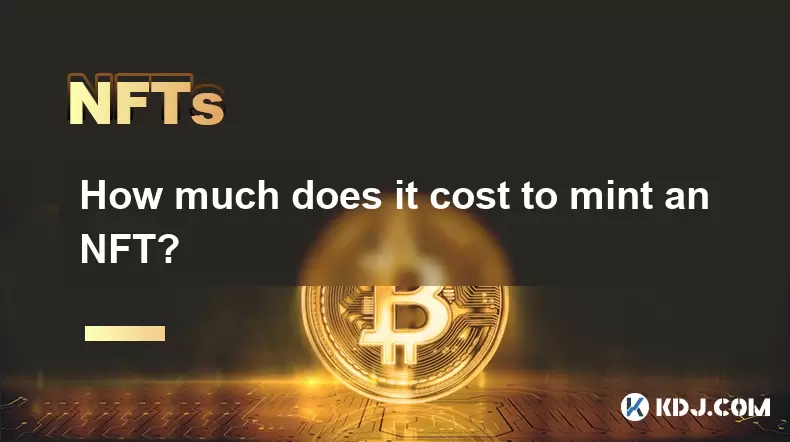
Understanding the Basics of NFT Minting
To determine how much it costs to mint an NFT, it's essential to first understand what NFT minting entails. Minting refers to the process of converting a digital file into a blockchain-based asset on a decentralized platform. This digital file can be anything from artwork and music to videos and virtual real estate. The blockchain network, such as Ethereum or Binance Smart Chain, is where this data is stored permanently.
Each NFT created through minting carries unique metadata that distinguishes it from other tokens. When you mint an NFT, you're essentially registering its ownership and authenticity on the blockchain. This action requires computational power and energy, which translates into transaction fees known as gas fees.
Factors That Influence the Cost of Minting an NFT
The cost of minting an NFT isn't fixed and varies depending on several factors. One of the primary influences is the blockchain network chosen for minting. For instance, Ethereum has traditionally had higher gas fees compared to networks like Polygon or Solana. Gas fees fluctuate based on network congestion and demand at any given time.
Another factor is the complexity of the smart contract being used. More complex contracts require more computational resources, thereby increasing the cost. Additionally, platforms like OpenSea or Rarible may charge listing fees or service charges, which also contribute to the overall expense.
Some marketplaces offer lazy minting, where the NFT isn’t minted until it’s purchased. This approach shifts the cost burden to the buyer but can affect visibility and credibility in some marketplaces.
Step-by-Step Breakdown of Minting Costs
- Connect your wallet (e.g., MetaMask) to the NFT marketplace of your choice.
- Upload your digital file and fill in the metadata, including title, description, and properties.
- Choose the blockchain you want to use — options include Ethereum, Polygon, Solana, etc.
- Set up the smart contract parameters such as royalties, unlockable content, and sale type.
- Review the gas fee estimate before proceeding with the minting transaction.
- Confirm the transaction in your wallet, paying attention to real-time gas price fluctuations.
Each step incurs a cost, especially during the final confirmation phase when actual network fees are paid. These fees are dynamic and can vary significantly within minutes.
Comparing Blockchain Networks: Cost Implications
Different blockchains have different economic models for processing transactions. On Ethereum, gas fees can range from $10 to over $100 during peak times due to high demand and limited block space. In contrast, Polygon offers near-zero gas fees thanks to its layer-2 scaling solution.
Binance Smart Chain provides another alternative with lower average fees than Ethereum, typically ranging from $0.5 to $5 per transaction. Solana is known for ultra-low fees, often less than $0.01 per transaction, making it attractive for creators focused on affordability.
Choosing the right blockchain platform depends not only on cost but also on audience reach, security, and ecosystem maturity. Each has trade-offs between speed, decentralization, and cost.
Hidden Costs and Additional Fees to Consider
Beyond the obvious gas fees, there are hidden costs associated with NFT minting. Some marketplaces charge a listing fee to put your NFT up for sale, while others take a percentage cut upon successful sale. Royalties set by creators can also impact long-term revenue sharing.
If you opt for IPFS hosting instead of centralized storage, you might incur additional costs for pinning services or using Filecoin via platforms like Pinata. Also, account for wallet transaction fees when transferring funds or interacting with multiple platforms.
Lastly, if you decide to update or edit your NFT after minting, this will require a new transaction, leading to further blockchain fees. Always plan ahead to minimize unnecessary interactions with the blockchain.
FAQs
Q: Can I mint an NFT without paying gas fees?
A: Yes, some platforms support lazy minting, allowing you to list an NFT for sale without upfront gas fees. The buyer pays the gas when purchasing the NFT.
Q: How do I check current gas prices before minting?
A: You can use tools like GasNow or ETH Gas Station to monitor real-time gas prices on Ethereum. Most wallets also display estimated gas fees before confirming a transaction.
Q: Are gas fees refundable if my NFT doesn’t sell?
A: No, once a transaction is confirmed on the blockchain, the gas fee is non-refundable, even if the NFT remains unsold.
Q: Does changing the price of my NFT cost extra?
A: Yes, modifying the sale price or attributes of an already minted NFT requires a new blockchain transaction, which incurs additional gas fees.
Disclaimer:info@kdj.com
The information provided is not trading advice. kdj.com does not assume any responsibility for any investments made based on the information provided in this article. Cryptocurrencies are highly volatile and it is highly recommended that you invest with caution after thorough research!
If you believe that the content used on this website infringes your copyright, please contact us immediately (info@kdj.com) and we will delete it promptly.
- Giants Protocol's G Token Live Launch: What You Need to Know
- 2025-07-18 21:30:13
- Solana, Rollblock, and the Gaming Token Revolution: What's Hot Now?
- 2025-07-18 22:10:13
- Crypto 2025: Will the Bull Run Be Led by Ethereum?
- 2025-07-18 22:10:13
- XRP, Dogecoin, and Crypto Bills: What's Shaking in the Crypto World?
- 2025-07-18 20:50:13
- Trump, Family Business, and Power: A New Era of Conflicts?
- 2025-07-18 20:30:12
- Trump, Business, & Bitcoin: A Crypto Capitalist's Vision
- 2025-07-18 20:40:12
Related knowledge
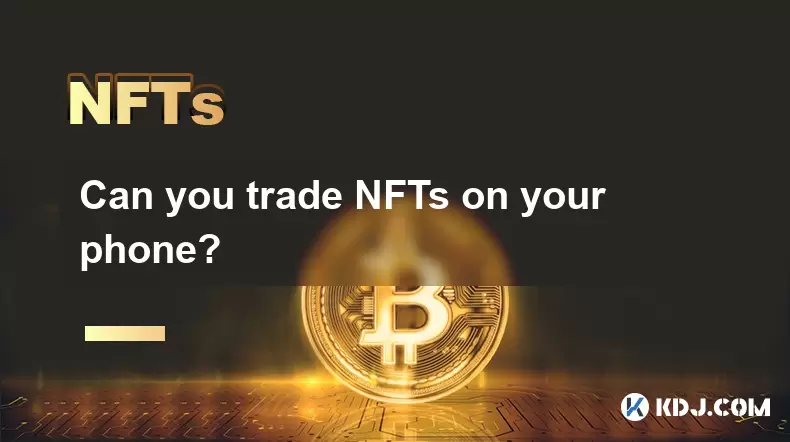
Can you trade NFTs on your phone?
Jul 18,2025 at 04:29am
Trading NFTs on Mobile DevicesYes, you can trade NFTs on your phone, and the process has become increasingly streamlined thanks to a variety of mobile...
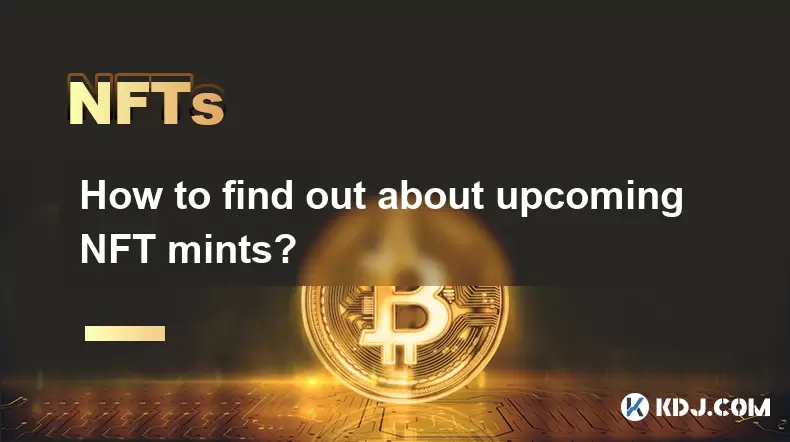
How to find out about upcoming NFT mints?
Jul 18,2025 at 11:50am
Exploring NFT Minting OpportunitiesUnderstanding the landscape of upcoming NFT mints is crucial for collectors, investors, and creators who wish to st...
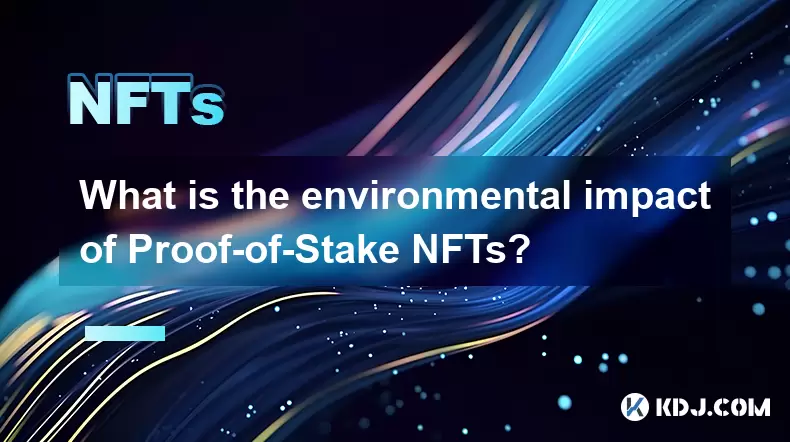
What is the environmental impact of Proof-of-Stake NFTs?
Jul 17,2025 at 07:14pm
Understanding the Basics of Proof-of-Stake NFTsProof-of-Stake (PoS) is a consensus mechanism used by blockchain networks to validate transactions and ...
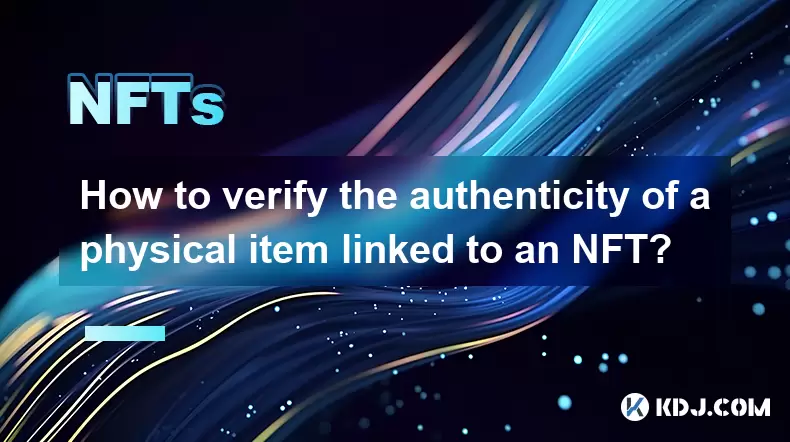
How to verify the authenticity of a physical item linked to an NFT?
Jul 18,2025 at 03:07pm
Understanding the Link Between NFTs and Physical ItemsWhen an NFT is linked to a physical item, it essentially acts as a digital certificate of owners...
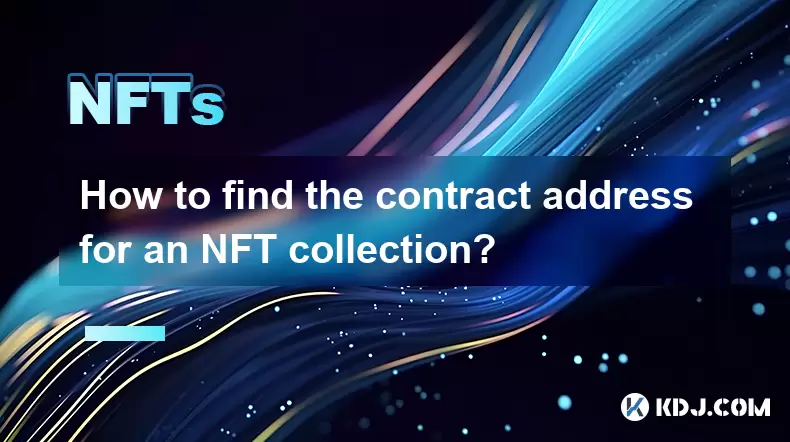
How to find the contract address for an NFT collection?
Jul 18,2025 at 11:56am
Understanding What a Contract Address IsIn the world of non-fungible tokens (NFTs), a contract address is a unique identifier assigned to a smart cont...
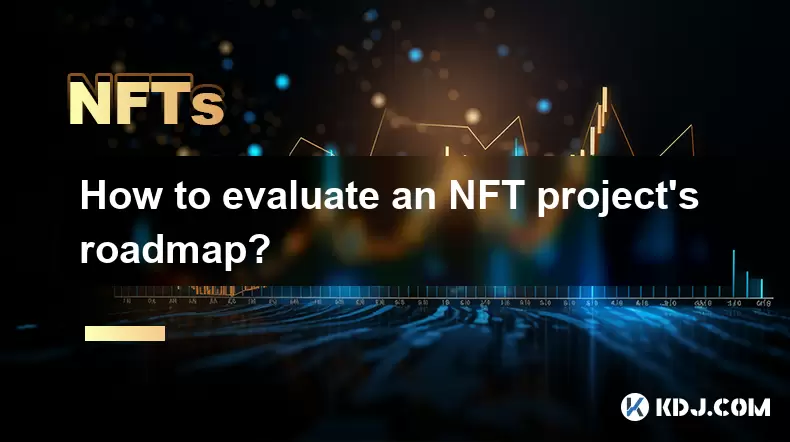
How to evaluate an NFT project's roadmap?
Jul 18,2025 at 01:21am
Understanding the Basics of an NFT Project RoadmapAn NFT project's roadmap is a strategic document that outlines the short-term and long-term goals of...

Can you trade NFTs on your phone?
Jul 18,2025 at 04:29am
Trading NFTs on Mobile DevicesYes, you can trade NFTs on your phone, and the process has become increasingly streamlined thanks to a variety of mobile...

How to find out about upcoming NFT mints?
Jul 18,2025 at 11:50am
Exploring NFT Minting OpportunitiesUnderstanding the landscape of upcoming NFT mints is crucial for collectors, investors, and creators who wish to st...

What is the environmental impact of Proof-of-Stake NFTs?
Jul 17,2025 at 07:14pm
Understanding the Basics of Proof-of-Stake NFTsProof-of-Stake (PoS) is a consensus mechanism used by blockchain networks to validate transactions and ...

How to verify the authenticity of a physical item linked to an NFT?
Jul 18,2025 at 03:07pm
Understanding the Link Between NFTs and Physical ItemsWhen an NFT is linked to a physical item, it essentially acts as a digital certificate of owners...

How to find the contract address for an NFT collection?
Jul 18,2025 at 11:56am
Understanding What a Contract Address IsIn the world of non-fungible tokens (NFTs), a contract address is a unique identifier assigned to a smart cont...

How to evaluate an NFT project's roadmap?
Jul 18,2025 at 01:21am
Understanding the Basics of an NFT Project RoadmapAn NFT project's roadmap is a strategic document that outlines the short-term and long-term goals of...
See all articles

























































































